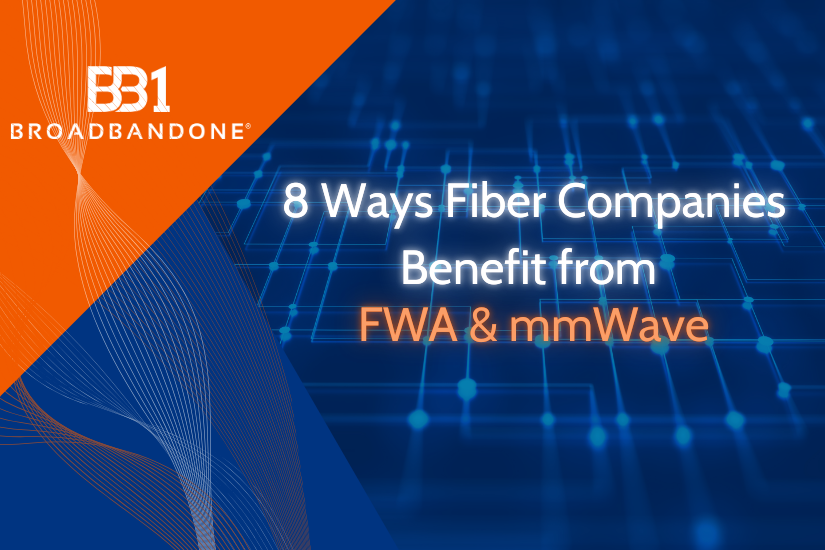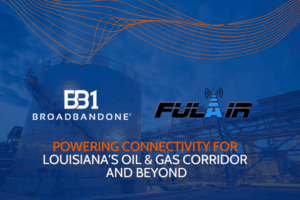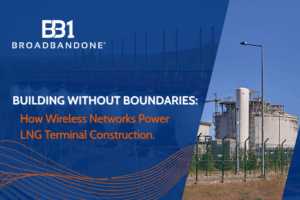Fiber communication companies are at the heart of modern connectivity, delivering the high-speed internet and infrastructure that power businesses, communities, and emerging technologies like 5G. However, the limitations of fiber networks—such as high deployment costs, lengthy installation timelines, and challenges in reaching remote areas—highlight the need for complementary technologies.
Fixed wireless access (FWA) with mmWave (millimeter wave) technology offers a unique opportunity for fiber providers to enhance their networks and meet the demands of an increasingly connected world. Here’s how FWA with mmWave technology can drive innovation, efficiency, and expansion for fiber communication companies.
1. Last-Mile Connectivity
Reaching the “last mile” has always been one of the most expensive and time-consuming aspects of fiber network deployment. Extending fiber directly to every customer, especially in low-density or geographically challenging areas, can require significant resources. mmWave technology provides a solution by acting as a wireless bridge between a fiber hub and the end user.
With its high bandwidth and low latency, FWA with mmWave can deliver fiber-like performance without the need for digging trenches or laying cables. This makes it an ideal solution for reaching customers in rural areas, remote locations, or regions where fiber deployment faces logistical hurdles. By incorporating mmWave, fiber companies can quickly and cost-effectively connect these last-mile customers, ensuring they receive high-speed, reliable internet access.
2. Redundancy and Backup
In the world of telecommunications, reliability is critical. Fiber cuts caused by construction accidents, natural disasters, or vandalism can disrupt services for hours or even days, causing significant inconvenience for customers and reputational damage for providers. mmWave technology offers a wireless redundancy option, ensuring that connectivity remains intact even if a fiber line is severed.
Fiber communication companies can integrate FWA with mmWave as part of a robust backup strategy, maintaining uninterrupted service for their customers. This dual-layered approach enhances network reliability and gives providers a competitive edge in guaranteeing uptime, even during unexpected disruptions.
3. Faster Deployment in Dense Urban Areas
Urban environments are bustling hubs of connectivity, but deploying fiber in dense cityscapes comes with its own set of challenges. High costs, limited physical space, and regulatory hurdles can make it difficult to install traditional fiber infrastructure. mmWave technology, with its ability to provide wireless connectivity over short distances, is an effective solution for such environments.
FWA with mmWave can connect buildings and businesses wirelessly, bypassing the need for extensive construction or roadwork. Its high bandwidth and low latency enable seamless communication between densely packed urban structures, allowing fiber providers to expand their services more rapidly and meet the growing demands of enterprise clients in these high-density areas.
4. Expanding Network Coverage
Fiber networks often struggle to reach underserved rural communities, temporary sites, or mobile applications due to cost and logistical constraints. FWA with mmWave offers a practical alternative to overcome these limitations. For rural areas, it bridges the gap where full-fiber deployment may not be economically viable. Temporary setups, such as construction sites or live events, benefit from the quick installation and high-speed performance of mmWave connections.
Additionally, mmWave supports mobile solutions like 5G base stations, extending network coverage into areas that were previously difficult to reach. By adopting mmWave technology, fiber providers can expand their service areas and cater to a broader range of customer needs, all while minimizing deployment time and costs.
5. Cost Optimization
Not all areas or applications justify the expense of deploying fiber infrastructure. For fiber communication companies, optimizing costs while maintaining high-quality service is crucial. By blending fiber with mmWave technology, providers can create hybrid networks that deliver exceptional performance without excessive investment.
This approach allows companies to allocate resources strategically, reserving fiber for areas where it delivers the highest return on investment and using FWA with mmWave for cost-effective connectivity in other regions. This flexible strategy ensures financial efficiency while maintaining a competitive service offering.
6. 5G Integration
Fiber networks play a foundational role in the deployment of 5G, serving as the backbone for its high-speed, low-latency performance. By integrating mmWave technology, fiber communication companies can further enhance 5G networks by enabling fronthaul and backhaul connections for base stations.
FWA with mmWave provides the wireless capacity needed to handle the massive amounts of data that 5G applications generate. From smart cities to IoT ecosystems, this integration opens new revenue streams for fiber providers while solidifying their position as key players in the mobile communications landscape.
7. High-Capacity Networks
As demand for high-speed internet continues to grow, fiber communication companies must deliver networks capable of supporting multi-Gigabit speeds. mmWave’s ability to handle high-capacity data transfer complements the performance of fiber networks, creating a seamless, powerful combination.
This hybrid network architecture is ideal for applications requiring ultra-reliable connectivity, such as enterprise solutions, edge computing, and smart city infrastructure. Together, fiber and FWA with mmWave provide the scalability and reliability needed to support modern connectivity demands.
8. Competitive Differentiation
In a crowded marketplace, differentiation is essential for success. Fiber communication companies that adopt FWA with mmWave technology can offer hybrid solutions that outperform competitors relying solely on traditional infrastructure. These advanced capabilities position companies as forward-thinking providers capable of meeting diverse customer needs with flexible and future-ready solutions.
A Future Powered by FWA with mmWave Technology
The partnership between fiber and mmWave technology is shaping the future of connectivity. By leveragingFWA with mmWave’s complementary capabilities, fiber communication companies can overcome traditional challenges, optimize costs, and expand their networks to underserved areas.
BroadbandOne (BB1) is at the vanguard of this technological convergence, offering innovative solutions that blend the strengths of fiber and mmWave technologies. Our Telco-as-a-Service (TaaS) model provides enterprise-grade service with licensed spectrum that is secure, flexible, scalable, and ready for immediate deployment. This approach simplifies complex wireless solutions while driving next-generation networks.
For businesses seeking high-speed internet and ethernet connectivity, our award-winning Telco as a Service (TaaS) offers enterprise-grade service with licensed spectrum that is secure, flexible and ready for deployment today. BB1 BusinessConnect, meanwhile, leverages mmWave spectrum to deliver lightning-fast and stable enterprise-grade fixed wireless and 5G networks, comparable to traditional fiber.
To explore how BroadbandOne’s solutions can elevate your network capabilities, contact us today!







